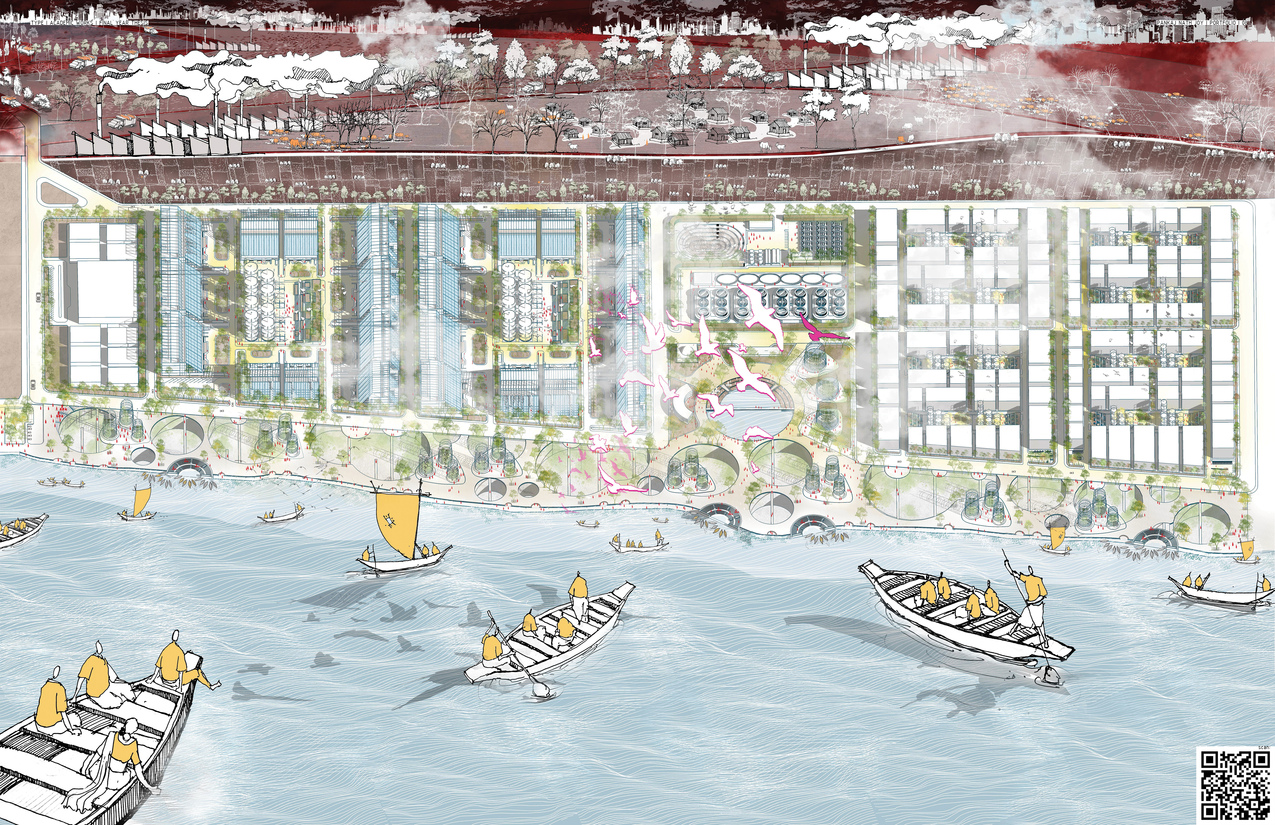
ARCHITECTURE INFRASTRUCTURE ASSEMBLAGE : AN APPROACH TO RETHINKING THE TANNERY INDUSTRY
At present time, in the rapidly developing metropolitans like Dhaka, disruptions are manifold, whereas the solutions are being segregated under different sectors and authorities. There is no fixed guideline as to from what point of view a project should be observed, whether it should be an engineer or an architect or as urban planner alone to address the issues, or we are to find a grey area in between, which maximizes the output of the objectives to be achieved.
The tannery industry is the second largest export based industry in Bangladesh which faces this form of disruption at a massive scale. In this project, rethinking of a tannery state is done under the concept of “Assemblage” which is an ontological framework developed by Giles Deleuze and Felix Guattari. This theory provides a bottom-up framework for analyzing social complexity by emphasizing fluidity, ex-changeability and multiple functionalities through entities and their connectivity.
The tannery estate in Dhaka had developed through decades in Hajaribag. In recent years this estate is shifted to Savar with a vision to upgrade the industries to an international level. But unfortunately, due to lack of proper infrastructure to support the newly built technologies as well as absence of an integrated business network which was present in Hajaribag, the Savar Tannery Estate is anticipated to turn into a mayhem very soon. Now the main challenge was to design a new tannery estate at Savar, regaining the lost social fabric of Hajaribag and including the upcoming technologies for upgradation.
The design approach is generated addressing the following issues. Firstly, rethinking of the entire tannery estate of master plan level integrating the climatic infrastructural demands and the optimum layout and location of individual industries. Secondly, proposing a single industry building where the environmental hazards are minimized, work environment is optimized and spatial layout is so designed as to compliment the production & waste management process. Thirdly, considering the large scale urban impacts of a tannery estate and coming up with an integrated approach where the industry will not be harmful for the city, rather it will enhance the social and economic prosperity in the long run.
The final design outcome is generated following the five points of Rhizome from the assemblage theory, connection, heterogeneity, multiplicity, asignifying rupture, cartography and decalcomania. Starting from the building mass to the clusters and finally the entire masterplan- these factors could actively decrease the predictable disruptions and generate opportunities for future adaptability from a single unit industry to the urban scale.
PROJECT BRIEF:
The proposed site is a 200 acre land in Savar on the bank of river Dhaleswari. Here the functions required are blended with the urban, social and climatic needs of the place. The factories are so designed that they are not only production houses but also healthy work spaces for the labours. The basic zonings of crust leather and finish leather industries are done separately according to their individual characteristic needs. The central zone is facilitated with the CETP and waste management plants, which on the upper levels serve as a social gathering space for the workers. Similarly the SATP( Solar Aquatic Treatment Plant) is situated along the river belt where the waste water before entering the river goes through a filtration process and the place itself serves as an urban recreation zone. The industrial area which is usually inaccessible by general public can now serve as an integral part of their leisure and enjoyment. Thus in the long run emphasizes the industry's contribution to the city in a broader scale. The northern portion of the master plan is so provided to accommodate future expansions and the residential facilities for the workers, where there is scope for development of the secondary businesses which are complementary to the tannery industry. This zonal distribution also provides a basic buffer to the city from the industries.
Starting from the individual building to the entire master plan, the design is generated ensuring multiple layers of function integrated within each of the spaces. The aim of this design is to redefine the preconceived idea prevalent about how an industrial building or an estate should look. Whether industries are supposed to be shoved away to the distant suburbs out of civil sight, or can they be a positive part of the emerging city as well? The outcomes show a redefined identity for the upcoming industrial estates, where the infrastructures are no longer a burden for the city’s aesthetics, but rather a major contribution to it.




